At an Amazon research site just outside Seattle in the US, a compelling vision of the workplace of the future is playing out. Amidst the stacks of totes - apparently unfazed by the clutter, noise and unpredictability of the environment - a small group of humanoid robots diligently go about their business, moving crates around, stacking boxes, and generally making themselves useful.
The robot in question is Digit, a bipedal human scale “mobile manipulation robot” developed by Oregon State University spin out Agility Robotics to help address a burgeoning human labour shortage that many believe represents an existential threat to society.
Standing 1.7 metres tall, weighing 63kg, and boasting striking backward-facing insectoid-knees that enable it to crouch down and reach deeply into shelves in a way that would challenge even the most flexible human, Digit is one of a number of general-purpose humanoid robots being deployed in similar settings around the world.
Talking to The Engineer earlier this summer, Agility’s CTO Melonee Wise explained that the technology is predominantly focused on so-called “water spider” applications in the logistics and manufacturing space: random jobs that crop up throughout the day, for which no particular individual is responsible. “A lot of our customers are asking us to look at those types of roles,” said Wise, “how do you have digit - throughout the day - shift from job to job to tackle these kinds of pop-up activities…and then move to the next one?”
The longer-term vision though is for the robot to become a flexible platform for a host of different apps and capabilities, rather like a walking, talking mobile phone. “We look at digit as the platform for a kind of app store for labour,” said Wise. “As Digit develops and learns new skills, we roll those out….so that you can use [it] to do whatever new task it’s learned that week.”
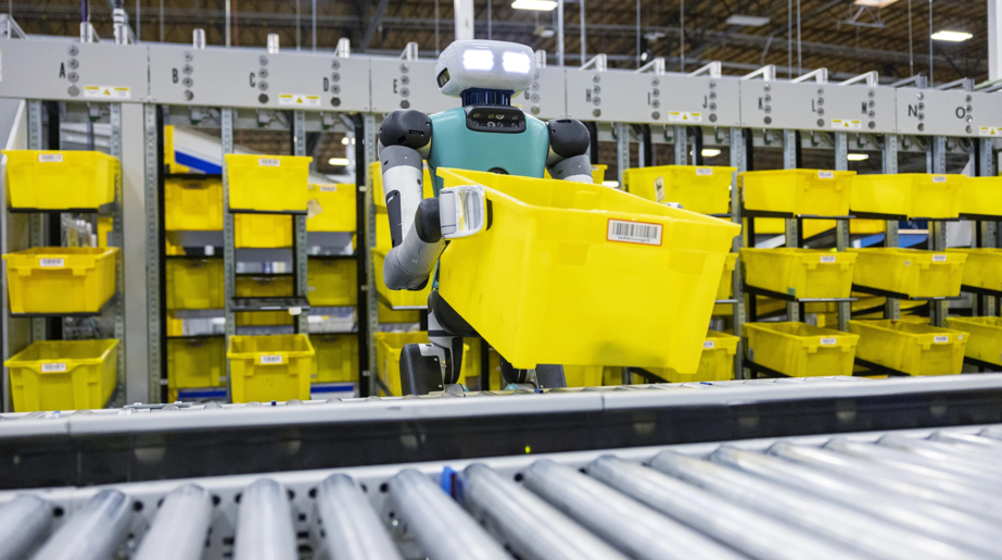
With the technology also undergoing trials at logistics provider GXO, Wise believes the company’s aggressive focus on real-life commercial applications has given it the edge over other humanoid robot developers, and said that the team is now close to signing full contracts with a number of different customers. In fact, it’s so confident of success that it’s even building what it claims will be one of the world’s first facilities for the volume production of humanoid robots: a scalable factory in Salem, Oregon – slated to come online later this year – that could, said Wise, ultimately produce as many as 10,000 robots a year.
But Digit is not alone. Indeed, recent months have seen a flurry of announcements and developments in what is becoming an increasingly competitive sector.
Earlier this year, Mercedes Benz announced a partnership with Texas firm Apptronik to trial its Apollo humanoid robot in a manufacturing setting; California startup Figure AI recently announced a similar deal with BMW; and Tesla boss Elon Musk has claimed that his group’s Optimus humanoid robot will be working in Tesla’s automotive facilities by the end of this year. Meanwhile, trailblazing Canadian firm Sanctuary AI - which is on a mission to create the world’s first human-like intelligence in general purpose robots - is exploring applications of its Phoenix humanoid and Carbon AI control system with Magna International, one of the world’s largest automotive suppliers.
In parallel with all this activity, after decades of marginal interest from the investment community, cash is now flooding into the sector, with tech giants such as Amazon, Nvidia, Microsoft and others all investing heavily. Indeed, Jensen Huang, CEO of Nvidia (which is now the world’s most valuable company) recently predicted that humanoid robots will soon become as common as cars. Against this fevered backdrop, Goldman Sachs Research estimates the global market for people-shaped robots could be worth a staggering $38 billion within the next 10 to 15 years.
One explanation for this acceleration in interest is that concurrent advances in hardware and AI software mean that intelligent humanoid robots have finally become a realistic prospect rather than a sci-fi dream.
Many in the sector, including Agility’s Wise, talk of a technological tipping point: “It wasn’t until the early 1970s that we had electric, computer controlled robotic arms,” she said, “and it wasn’t until the mid-1980s, that we had electric computer-controlled arms where the motors were in the joints. Every 10 years or so we make these kinds of either hardware or compute jumps….and recently, we’ve been entering this phase where it’s suddenly possible to do machine learning, reinforcement learning at scale.”
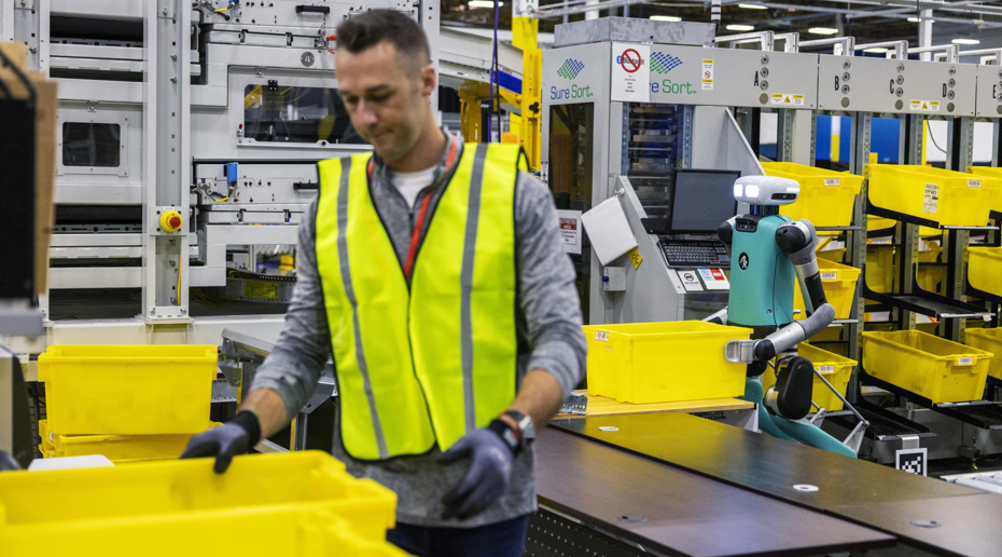
Geordie Rose – co-founder and CEO of Sanctuary AI - puts it more bluntly: “The fundamental reason is that advances in AI have gotten to the point where people are starting to believe you can actually do it,” he said. “And by people, I mean the CEOs of all of the big tech companies.”
But it’s what’s driving this need and interest that is perhaps most interesting, with many in the field believing that humanoid robots will actually be key to addressing one of society’s most alarming existential threats.
“Right now, there are labour shortages in multiple industries, where there just aren’t enough people to do the work that’s required,” said Rose. “There are more than 10 million unfilled jobs in the United States and the global number is projected to grow to almost 100 million unfilled jobs globally by 2030. In South Korea right now for every 100 great grandparents there will be four great grandchildren. And they’re not unique. Even in Canada and the United States we’ve been below replacement rate [a measure the of the level of fertility needed to keep the population the same from generation to generation] now for almost 70 years. The implications of not having anybody to do work are catastrophic, so the obvious solution is to build technology that can perform the sorts of tasks that are required to keep civilization working.”
And for Wise, Rose and others it makes obvious sense for this technological solution to take a human form. “The world is built for people so if you want a machine that can work in a human environment, they need to be humanoid,” said Rose.
What’s more, said Wise, humanoid robots could be key to getting the best out of the automation technologies we already have: “As we’ve been automating, we have been creating these islands of automation in which we need these connector roles, these flexible automation solutions to connect islands of automation It’s funny, because at the end of the day, all of this beautiful automation that we’ve architected can be taken down by a person having a sick day because you can’t make some of these processes connect.”
Humanoid robots are also potentially much easier to train, added Rose. “When you’re teaching these machines how to act, we use tele-operation, which means a person is actually moving their body to move the robot. And it’s actually a lot easier to teach a robot to do things as a person if you have the general intuition of how to perform the task yourself and you can just do it.”
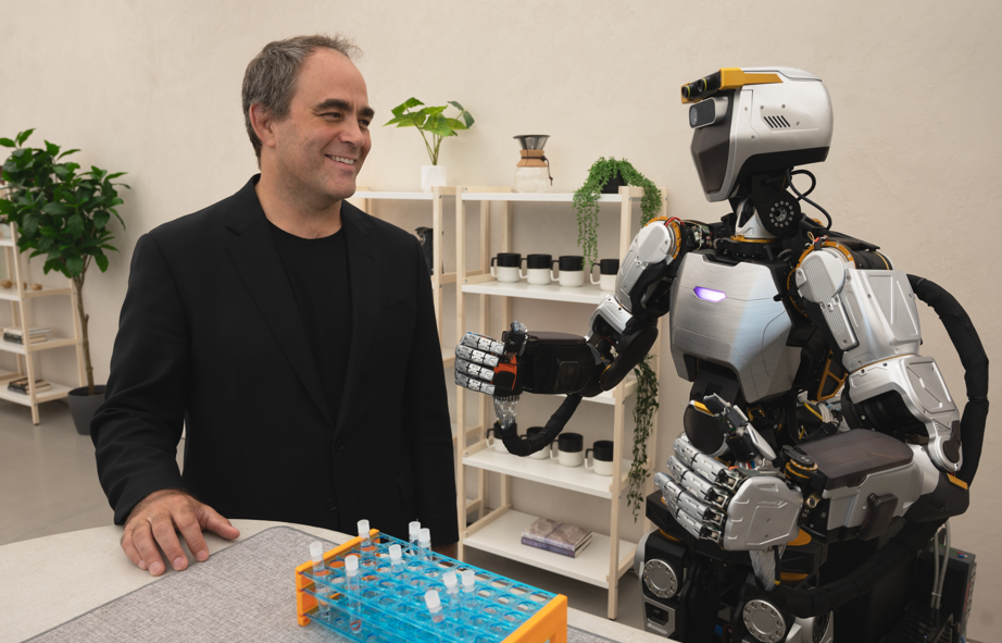
However, despite the progress and the widespread agreement on the potential of humanoid robots, views on how to transition the technology into the mainstream differ depending on who you’re talking to. Sanctuary’s Geordie Rose, for instance, is unconvinced by the strategies of many of the companies operating in this space.
“With a lot of the humanoids, their capability envelope is so small, they can only do a certain number of things like move totes around a warehouse….for which there are better solutions already” he said. “What’s going to happen with most of the applications that people have chosen is that their systems are going to evolve into a niche that prevents them from generalizing out of that niche. They’re going to create special purpose machines for special purpose problems. The only reason to build a humanoid is if you can make it a general-purpose robot.”
And the key to achieving this - he said - is the software. Indeed, whilst Sanctuary’s Phoenix robot is an impressive looking unit, Rose is relatively dismissive about the hardware challenges. “The robot’s a trivial problem,” he said, “It doesn’t take long to build a robot that can walk around and do things. The hard part is the software. Can you build a software system that thinks like a person or not? If you can’t, then none of this humanoid stuff makes sense.”
Can you build a software system that thinks like a person or not? If you can’t, then none of this humanoid stuff makes sense
Geordie Rose - Sanctuary AI
Having worked on related challenges for a number of years, Rose believes he and his team are uniquely well-placed to address this challenge. Prior to founding Sanctuary in 2018, Rose headed up quantum computing pioneer D-Wave and was also CEO of Kindred, the world’s first robotics company to use reinforcement learning in a production environment. “We’ve accumulated quite a war chest of intellectual property and knowledge about how to solve the problem that others don’t have yet,” he said.
Whilst the long-term vision is an intelligent humanoid robot with an almost limitless number of applications, Rose - like others - has identified the semi-structured world of automotive manufacturing as a great place to start: “Despite the high levels of automation in these facilities, there’s still a requirement for human labour,” he said, “and if you watch what these people are doing in very general terms it can be described as chaotic picking: moving parts that are not always in the same place from one machine to another.”
The focus here is on challenges where there’s what’s known as a “grasping in the wild” element. “If a system is designed to pick up or move a thing that’s always in the same place with the same conditions, it’s a trivial problem,” said Rose. “But if I asked you to go to a desk you’ve never seen and pick up a coffee cup that you’ve never seen, that may or may not be there, or it might be in a different position, that’s an unsolved problem in robotics.”
To get to grips with these kind of problems, Sanctuary is currently working with a number of industry partners - including automotive firm Magna - and Rose expects to shortly begin trialling systems in a manufacturing environment. “By the end of the year, we’ll have systems out in the world attempting to do work, probably not successfully, I would guess. But it’s a process that has to be done iteratively. Being able to put it on a production line for real is probably a couple years of iterative hard work.”
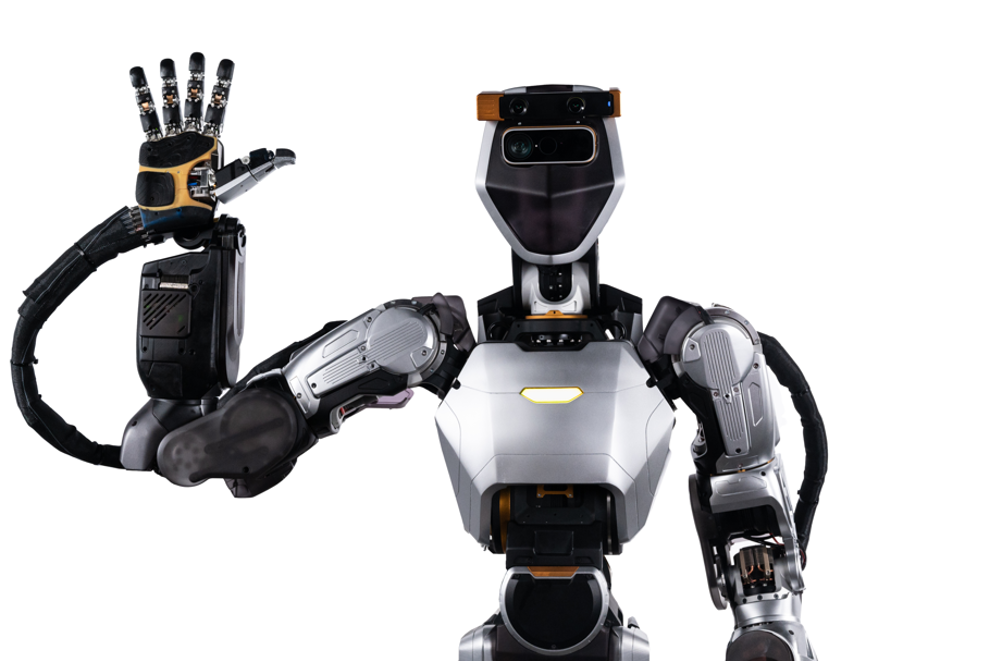
But despite the leaps being made by organisations like Sanctuary and Agility; the growing excitement from the investment community - and the headline-grabbing predictions of executives like Huang and Musk - there is some scepticism in the wider robotics community.
Mike Wilson, chief automation officer at the UK’s Manufacturing Technology Centre - and a noted authority on industrial robots - told The Engineer that he doesn’t expect to see a major ramp up of industrial humanoids any time soon, largely because they will be over-specified for the kind of applications people are talking about. “A humanoid robot will ultimately have the same kind of capability that we walk in with, but that’s over-specified for most of the industrial jobs that need to get done. And we are effectively over-specified for most of those jobs as well. Do you need to design a machine that can do what we can do if we’re over specified in the first place?”
For Wilson, existing industrial automation technologies simply represent a more cost-effective solution to the challenges faced by industry: “If you can automate using more traditional methods….then you’re definitely going to follow that route, because it’s going to be just a more cost effective, more efficient route.”
Many of these concerns are shared by Dr Ingo Keller, head of robotics at the National Robotarium, the UK’s centre for robotics and artificial intelligence.
Just putting more complex machines out in the world will not cut it. We need to also look into other directions: What does it mean for people? What does it mean for health and safety? We need to go beyond the pure task space and look into the social repercussions.
Dr Ingo Keller - head of robotics. National Robotarium,
While suggesting that the trend towards smaller batch production and customised solutions might play well to a humanoid robot’s capabilities, Keller is similarly unconvinced by the prospect of armies of humanoid robots transforming our factory floors. “Within the robotics community I believe there is quiet scepticism over whether this is the right approach” he said. “For each task that we get shown, there is probably a much more effective, much more efficient, specific machine that could potentially be invented.”
Keller also believes that the deployment of the technology will inevitably be slowed by the cold hard reality of red-tape and regulation, a situation analogous to the slower-than-expected arrival of self-driving cars. “We have seen that as technology gets to a certain point and has quite good capabilities, actual adoption is slower than people would have expected,” he said. “Because how can we make policies that support these new machines going around? What is the safety and health impact and what does it mean to the workforce?”
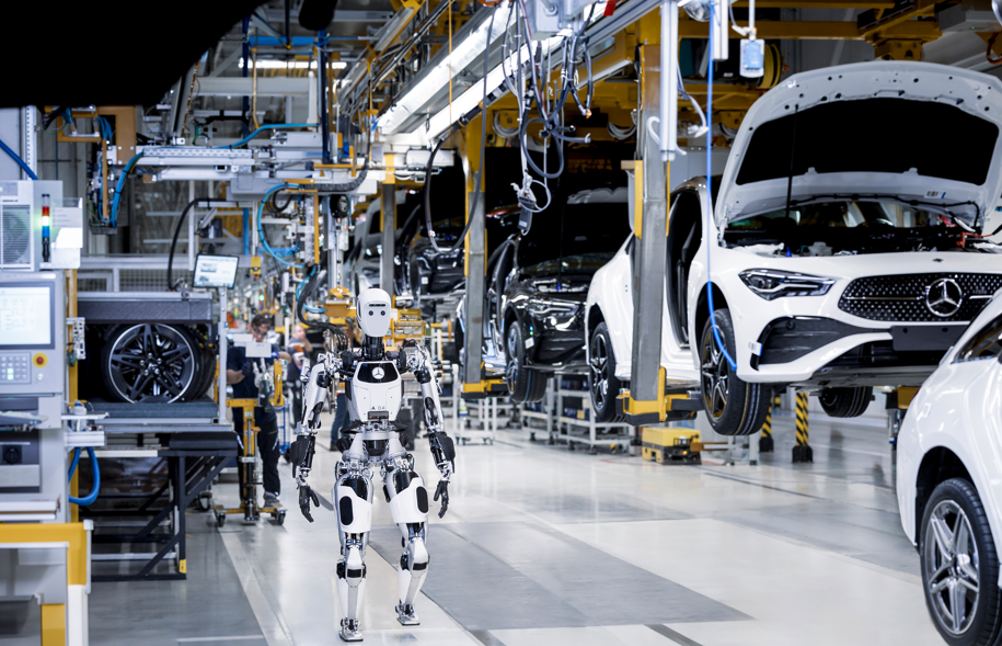
What’s also required, Keller added, is a much greater focus on the softer issues and the broader holistic challenges of integrating humanoid robots into society - which is a key area of focus for the Robotarium. “These days, most of the discussion goes into what we can do in terms of manipulation and task fulfillment, while not that much goes into the social interaction aspects, and I believe we need to combine these in the future. Just putting more complex machines out in the world will not cut it. We need to also look into other directions: What does it mean for people? What does it mean for health and safety? We need to go beyond the pure task space and look into the social repercussions.”
For some, the prospect of artificially intelligent humanoid robots sharing our workspace and walking and working alongside us is an unrealistic prospect, at least any time soon. For others, it’s a chilling notion straight from dystopian science-fiction .But for an increasingly bullish and ambitious group of scientists and engineers working in the sector, it’s an eminently deliverable technology that can’t come quickly enough, and developments in the field will - for now - continue to come thick and fast: “Some people view AI itself as an existential threat, but that’s totally backwards,” said Geordie Rose. “It’s the only thing - I think - that will save us. This is a real frog boiling in the pot problem….because demographic change happens over generations, people don’t notice it happening until it’s too late.”












Taking steps toward reindustrialisation
The author omits two blindingly obvious issues: the UK's diminished position in geopolitics, catalysed by the insanity of Brexit, and the serial...